Please complete the form below, and one of our experts will be in touch.
If you would like to send a technical drawing with your enquiry, please email heavysprings@lesjoforsab.com
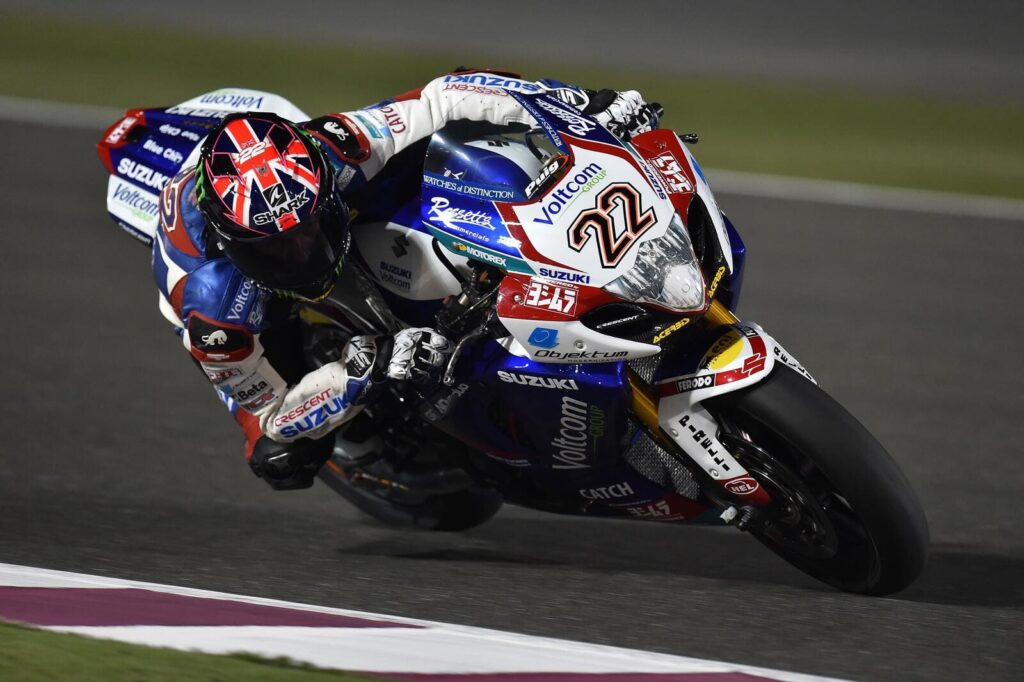
Suspension systems include many components, from shock absorbers to fork components, linkage systems and adjustment mechanisms. However, motorbike suspension springs are an underestimated driving force in the setup that differentiates mediocre rides from champion-winning success.
At Lesjöfors, we develop and manufacture precision race suspension springs for the motorsport industry's most trusted brands. In this post, you will discover a list of motorbike suspension components and explore how springs affect a bike’s performance. You will also learn about preload and sag adjustment to gain a significant competitive advantage.
Let’s begin with a brief overview, closely followed by a list of suspension components
A motorbike suspension system is as important as a killer engine for a high-performance motorsports experience. Whilst high-performance engines provide power and speed, suspension systems have many competitive advantages on the track.
Suspension systems dampen vibrations, improve rider comfort, maximise grip, improve handling, reduce body roll and improve off-road capabilities. Optimising your motorbike suspension system can drastically improve performance results.
Motorbike suspension systems work by absorbing forces from uneven surfaces. When the wheel hits a bump, the force is transferred upward to the suspension. Suspension springs compress to absorb this energy, reducing the impact on the rider’s performance.
The shock absorber (damper) slows the spring’s compression, converting the energy into heat. The spring then releases the stored energy and pushes the wheel back down to maintain contact with the road. The speed of this rebound is controlled by the shock absorber to keep the ride smooth, stable and on track.
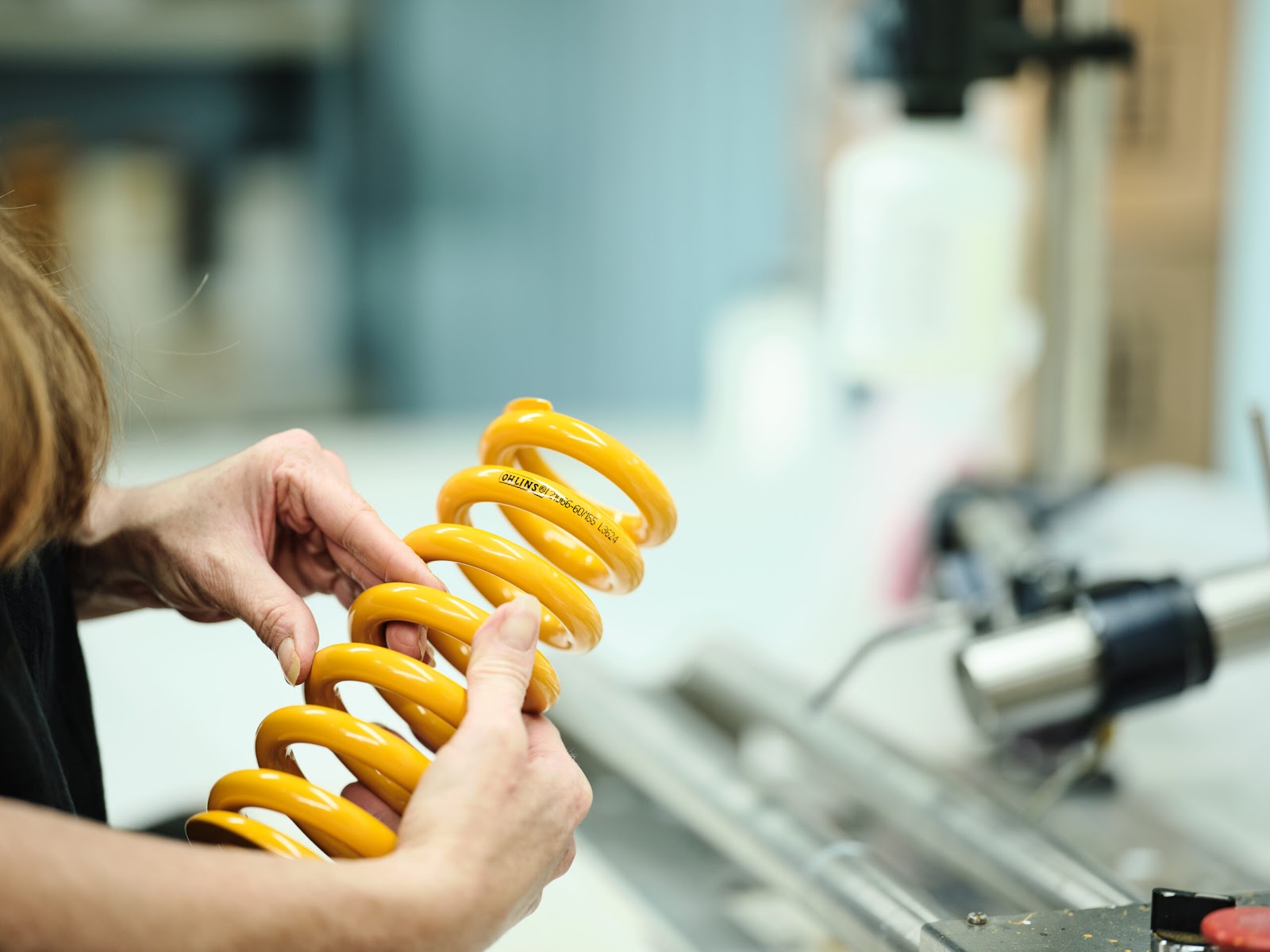
From springs to dampers and adjusters, here is a list of common components found in motorbike suspension systems.
Springs are the backbone of a motorbike's suspension system, providing the ability to absorb shocks and maintain consistent wheel contact with the road.
Compression springs are the most common type used in motorbike suspension systems. They compress under load to absorb energy and then expand back to their original shape to release that energy gradually. Typically, they are housed within the forks, absorbing shocks from bumps, and in rear suspension setups to cushion the bike against impact.
Extension springs, or tension springs, operate by stretching under a load and then pulling back to their original length when the load is removed. Applications include use in secondary systems such as linkages in advanced suspension setups.
Torsion springs work by twisting when a rotational force (torque) is applied. They store and release energy through angular movement. In some rear suspension systems, they are used in the linkage to support load transfer and improve shock absorption.
Linear springs – which include linear compression, tension and torsion springs – compress evenly across their length, offering a consistent spring rate regardless of the load. This makes them ideal for performance-oriented riders who need precise handling and consistent feedback from their suspension.
While they may not adapt to varying terrain like progressive springs, their straightforward behaviour makes them ideal for sport bikes and racing setups that need predictable handling.
Progressive springs offer variable resistance based on the load; the spacing between the coils changes along the spring’s length to allow for softer compression for small bumps and firmer resistance for larger impacts.
This provides a smooth ride over uneven terrain and maintains stability during aggressive, fast-paced manoeuvres. Often used in off-road bikes, these springs allow the suspension system to adapt dynamically to changing conditions.
Spring rate in motorcycle suspension refers to the amount of force needed to compress the spring by a specific distance, typically measured in kilograms or pounds per millimetre. It determines how stiff or soft the suspension feels, directly affecting ride comfort, handling, and how the bike responds to varying loads.
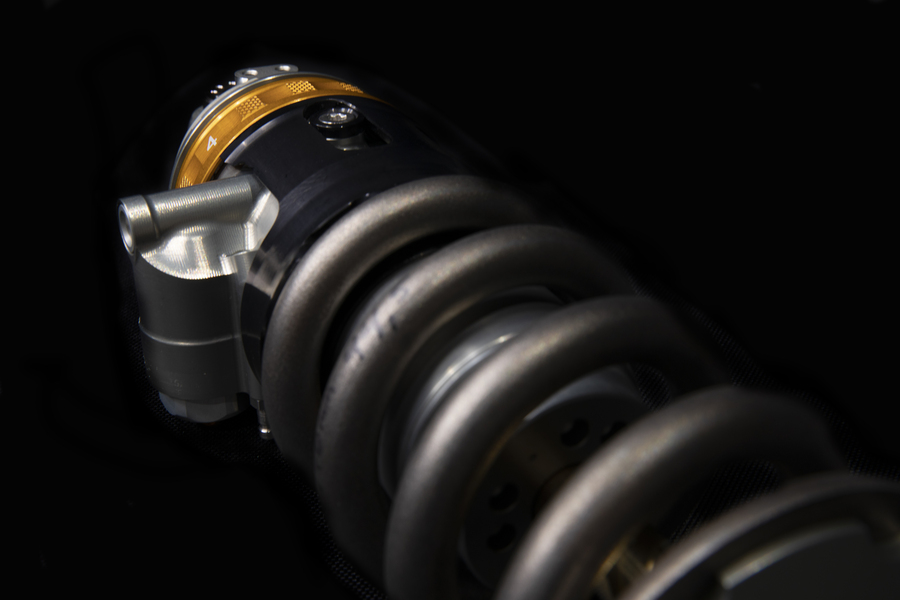
Shock absorbers, or dampers, work alongside springs to control motion and provide stability. Springs absorb and store energy from impacts, and dampers manage how quickly the suspension compresses and rebounds to keep the ride smooth and controlled.
A damping rod is a simple mechanical component in traditional motorbike suspension systems, particularly in telescopic forks. Its main function is to regulate the flow of hydraulic fluid within the suspension, controlling the compression and rebound of the spring. While simple and cost-effective, damping rod systems can struggle to provide consistent performance under extreme conditions.
Cartridge systems offer better damping control than traditional damping rods. These use a sealed cylinder that contains a piston, valves and springs. Unlike damping rod forms, they integrate the shock absorber directly into the telescopic fork, which makes them more responsive. They also allow for separate tuning of compression and rebound damping and offer better performance in high-stress conditions.
Reservoirs are an advanced feature in high-performance shock absorbers. They provide additional space for hydraulic fluid and prevent the formation of air bubbles (cavitation) by maintaining constant pressure. They also dissipate heat generated by the damping process, which makes them particularly useful in off-road or racing environments.
The piston and valves are the core components that control fluid flow within the damper. As the suspension moves, the piston pushes hydraulic fluid through precisely engineered valves, creating resistance.
These valves can be tuned for specific damping characteristics, balancing compression and rebound forces for optimal performance. Often, high-performance systems use adjustable or multi-stage valves to allow riders to fine-tune their suspension for different conditions.
Seals prevent hydraulic fluid from leaking and stop dirt or debris from entering the damper. Bushings minimise friction between moving parts, such as the piston rod and damper body, for smooth, efficient operation. Worn seals or bushings can lead to decreased performance.
Fork components form the heart of a motorbike's front suspension system. These components absorb shocks, maintain wheel alignment and provide predictable handling.
Fork tubes, also known as stanchions, are the visible outer part of a fork that connects the front wheel to the handlebars. They slide in and out of the fork sliders or lower tubes vertically to absorb bumps in the road. Usually, they are made of steel or aluminium, but may also be coated for added durability.
Fork oil is the hydraulic fluid used within the front suspension system to control damping. As the fork tubes compress and rebound, the oil flows through valves in the damper assembly, which provides resistance to motion and ensures stability. The viscosity of the fork oil affects the suspension's behaviour, with thicker oils offering more resistance and thinner oils allowing for faster movement.
Fork caps seal the top of the fork tubes to prevent oil leaks. Many fork caps also feature adjusters that allow riders to fine-tune preload (spring compression) or damping settings.
Linkage systems use a combination of pivoting components to provide progressive suspension behaviour (the suspension becomes stiffer as it compresses). This supports motorbikes in absorbing both small bumps and large impacts. It’s a staple in off-road bikes where precise rear-wheel control is needed.
The swingarm is the backbone of the rear suspension system, connecting the rear wheel to the motorbike’s frame. It allows the wheel to move up and down in response to the road whilst maintaining stability and alignment. It houses the rear shock absorber and acts as the foundation for the linkage system.
Linkage arms transfer motion from the swing arm to the shock absorber. They reduce the force applied for soft, small bumps and increase the resistance to large impacts. This optimises the rear suspension, making it respond appropriately to different levels of impact.
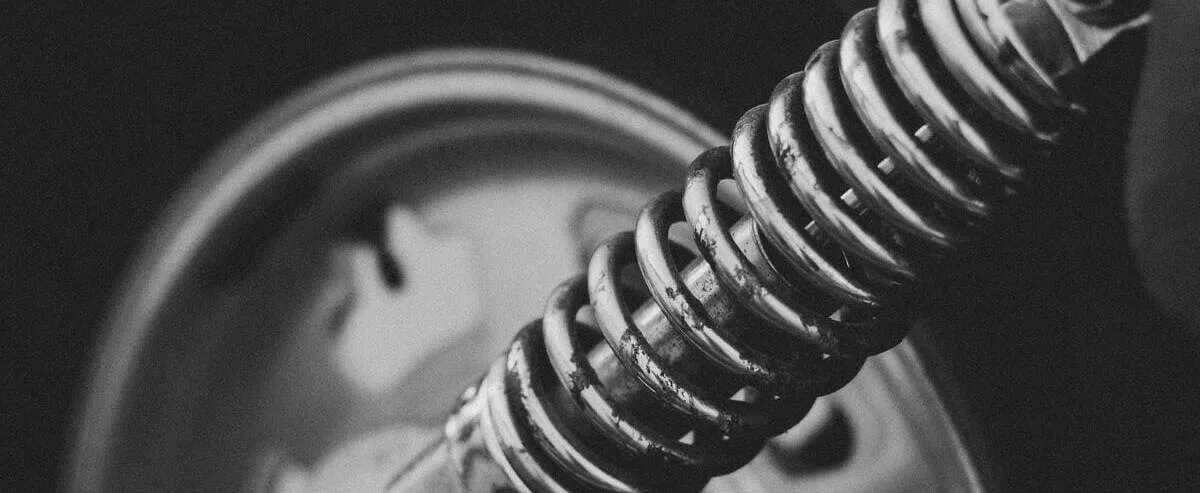
Modern, high-performance motorbikes offer highly adjustable suspension systems, allowing riders to fine-tune their set-up for optimal performance. Springs play pivotal roles in these mechanisms, and by adjusting, riders can improve their experience and enjoy a smooth, controlled ride.
Compression adjusters control how quickly the suspension compresses under load, such as when the bike hits a bump or during heavy braking. They work alongside suspension springs by regulating the flow of hydraulic fluid within the damper, offering resistance to sudden impacts.
By tweaking the compression settings, riders can make the suspension softer for comfort or firmer for better control in aggressive riding. High-performance bikes often feature separate high-speed and low-speed compression adjusters, allowing for greater precision in tuning how the springs and damping system respond under different forces.
Preload adjusters change the initial tension on the suspension springs, altering the suspension’s baseline position. This adjustment is critical for setting the bike’s sag – the amount the suspension compresses under the rider’s weight.
Rebound adjusters control how quickly the suspension extends back to its normal position after being compressed by controlling how the suspension spring's stored energy is released. They stop the suspension from rebounding too quickly – which can lead to a bouncy ride – or too slowly. Adjusting the rebound damping makes sure that wheels maintain contact with the ground, which improves traction and stability.
Ride height adjusters allow riders to change the overall height of the bike. This adjustment can involve changing linkage geometry or modifying spring preload. Lowering the ride height can improve stability and make it suitable for shorter riders, whereas raising the height provides greater ground clearance for off-road performance.
Since ride height also influences the bike’s centre of gravity and weight distribution, it plays a key role in how the suspension springs and chassis work together through corners and straight-line riding.
Suspension springs are key components of a motorbike suspension system. They absorb and store energy from impacts and help the bike maintain consistent contact with the ground. They work alongside other components, such as dampers, to optimise the bike's handling in high-performance motorsport conditions.
Suspension springs support the weight of a motorbike, rider and additional loads. Springs ensure the suspension stays in the correct range of motion, known as the bike’s sag. This allows the suspension to absorb impacts while keeping the tyres in contact with the track. Load support is vital for stability, especially during acceleration, braking and cornering.
Suspension springs and dampers work together to control the motion of the bike. While springs absorb energy from road impacts by compressing and rebounding, dampers regulate the speed of this movement, preventing excessive bouncing. This creates a well-balanced, responsive suspension system.
Preload and sag adjustments affect a motorbike’s ride quality, handling and stability.
Preload refers to the initial tension applied to the suspension springs before the bike encounters any load. Increasing preload, the spring compresses less under load, raising the bike’s height. On the other hand, reducing preload allows for more compression and lowers the bike’s stance. Adjusting preload is especially important for variations in rider weight or when there are extra loads, such as luggage or passengers. However, the main purpose of adjusting the preload is to set sag.
Sag is the distance the suspension compresses under weight. Free sag is the distance the suspension compresses under the bike's weight alone. Meanwhile, rider sag is where the suspension drops and settles when a rider is in full gear on the bike.
By fine-tuning preload and sag, riders can achieve a balanced suspension setup that responds predictably to road conditions whilst improving handling and traction.
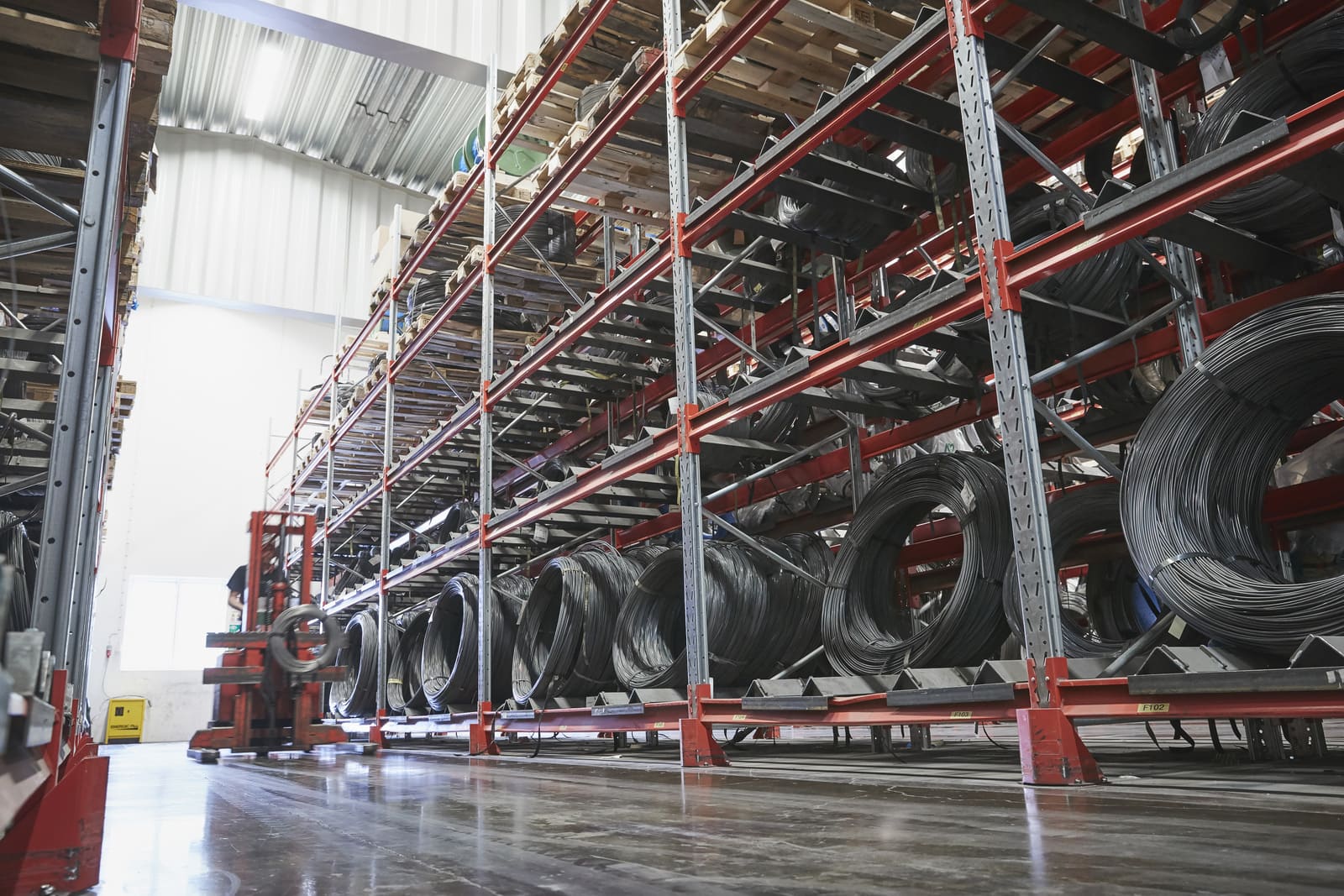
Motorbike suspension springs are vital to achieving superior performance in motorsports. Many types of springs are used within suspension systems, including compression, extension, torsion and progressive springs. These support preload and sag adjustments, enabling riders to customise suspension settings depending on their weight, height and track conditions.
At Lesjöfors, our high-performance, precision-engineered race suspension springs deliver a significant competitive advantage for your motorsport goals. We’re trusted by some of the biggest motorsport companies and design, develop and manufacture exceptional compression, extension, torsion and progressive springs.
Need cutting-edge, advanced spring solutions for your motorsport goals?
Contact us to find out more.
Yes, motorcycle suspension springs can wear out over time, though they generally degrade much more slowly than other suspension components like seals or bushings. The rate and extent of wear depend on several factors, including the quality of the springs, riding conditions, and maintenance practices.
You can make your motorcycle suspension more comfortable by adjusting preload and optimising it for your riding style, weight, and track terrain. You can also upgrade to higher-quality springs and cartridge fork systems, which allow for adjustable compression and rebound damping.
You can determine whether your suspension springs are bad by checking the following:
Is there excessive sag?
Are you frequently bottoming out?
Does your ride feel too harsh or too bouncy?
Have preload adjustment settings lost their elasticity?
Are there unusual noises coming from the suspension?
Is there any visible damage or corrosion?
Springs should be replaced if they have lost tension, are visibly damaged, or no longer perform within the recommended sag and preload settings.
Preloading doesn’t make a spring stiffer. Instead, it compresses the spring before any load is applied, effectively raising the suspension’s starting point. This adjustment influences ride height and sag, but not stiffness.
A spring that’s too stiff can limit suspension travel, reduce grip on uneven surfaces, and transmit more force to the chassis. This often results in a harsh ride, compromised handling, and decreased performance.
We are world-leading heavy duty spring manufacturers, delivering the greatest expertise in compression, torsion and tension spring manufacturing.
Delivering impact to every industry, we guarantee spring solutions that will optimise your performance and success.

